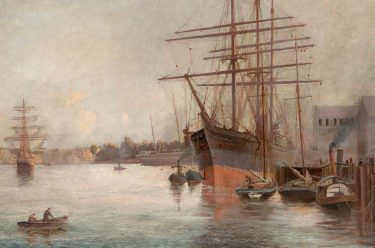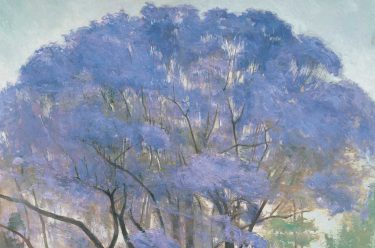Harriet Jane Neville-Rolfe’s watercolour Houses of Parliament, Brisbane 1885 (illustrated) was painted just before the artist left Australia to return to England. We can clearly see Queensland’s Parliament House and other recognisable Brisbane landmarks from across the river in a depiction of the daily life of a port city named after the river that runs through it.
In the spring of 1883, the young British artist sailed to Australia from her family home in Norfolk to join her siblings on a cattle station 396 km west of Rockhampton in Central Queensland, and 769 km north-west of Brisbane — to give an idea of how remote, if you were driving non-stop from Brisbane today it would take over 11 hours. Alpha Station was therefore extremely remote in the 1880s, however it dominated the area and grew to more than 1600 square kilometres by the 1890s. Over two years, Neville-Rolfe recorded life on Alpha in vivid washes of watercolour and sent many of these drawings back to her family in England before she returned.
Neville-Rolfe’s Breakfast, Alpha 1884 (illustrated) captures her family at the breakfast table. Floor-length white table linen, fresh wild flowers and silver tableware suggest that Neville-Rolfe’s former English lifestyle and social standing had been successfully transported to the colonies. The artist has captured the rustic nature of the interior of the room, illustrating the corrugated iron roof, exposed rough-sawn beams and slab walls, bullock horns and guns hanging on the wall in a somewhat English view of the harsh Australian outback.
Harriet Jane Neville-Rolfe ‘Breakfast, Alpha’ 1884

Harriet Jane Neville-Rolfe (center front)
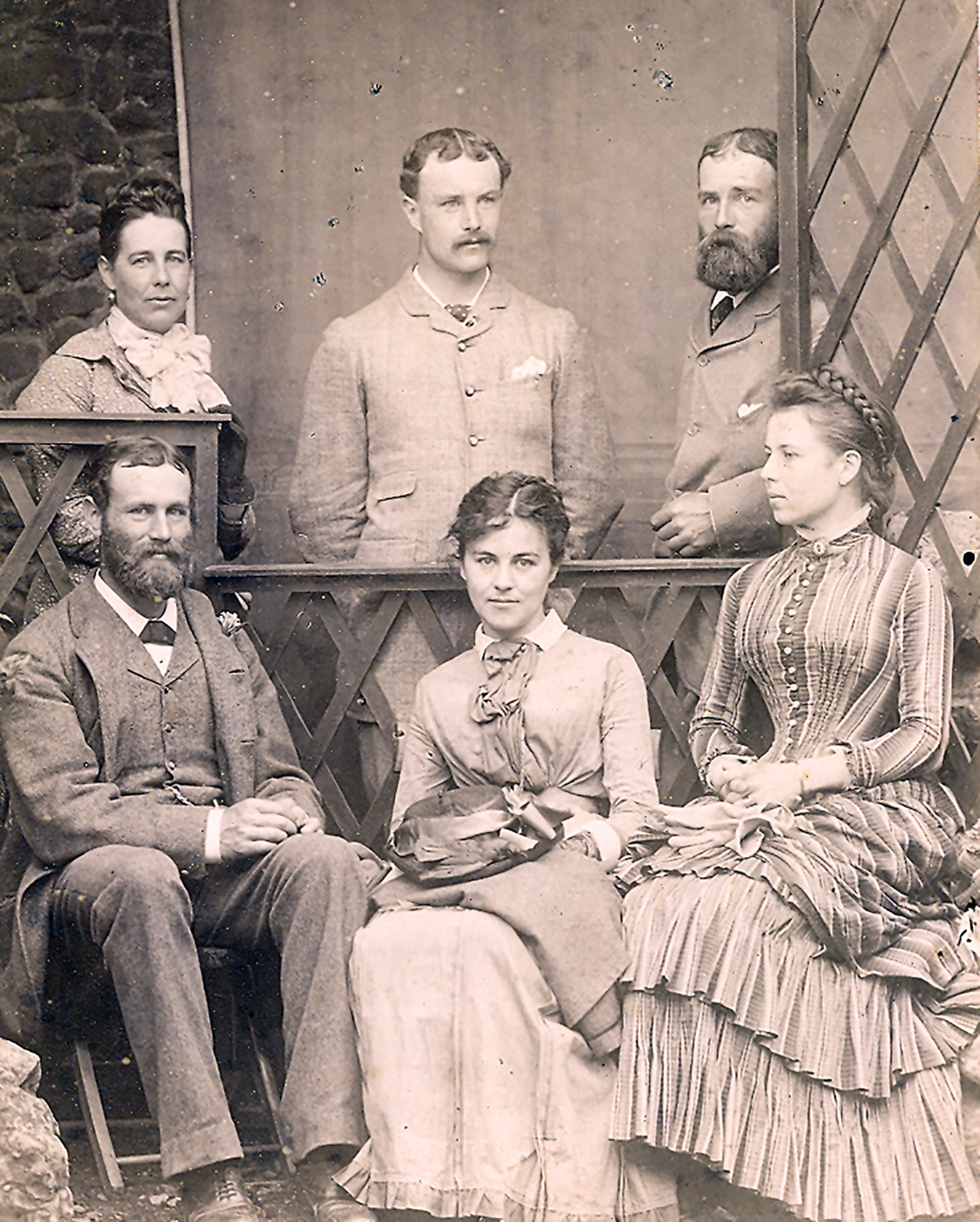
Brisbane in 1885
Brisbane was a young township when Neville-Rolfe visited, only becoming a municipality 24 years earlier on 6 June 1859 when Queen Victoria approved the creation of the new colony called Queensland. By the 1880s Brisbane became the main site for commerce in the state, and a capital in waiting until 1901. The mid-1880s also brought a period of economic prosperity through trade, and the major construction boom in Brisbane produced an impressive number of notable public and commercial buildings. As the infrastructure of the Colony of Queensland improved, Brisbane began to acquire facilities that laid the groundwork to become the country’s third largest city.
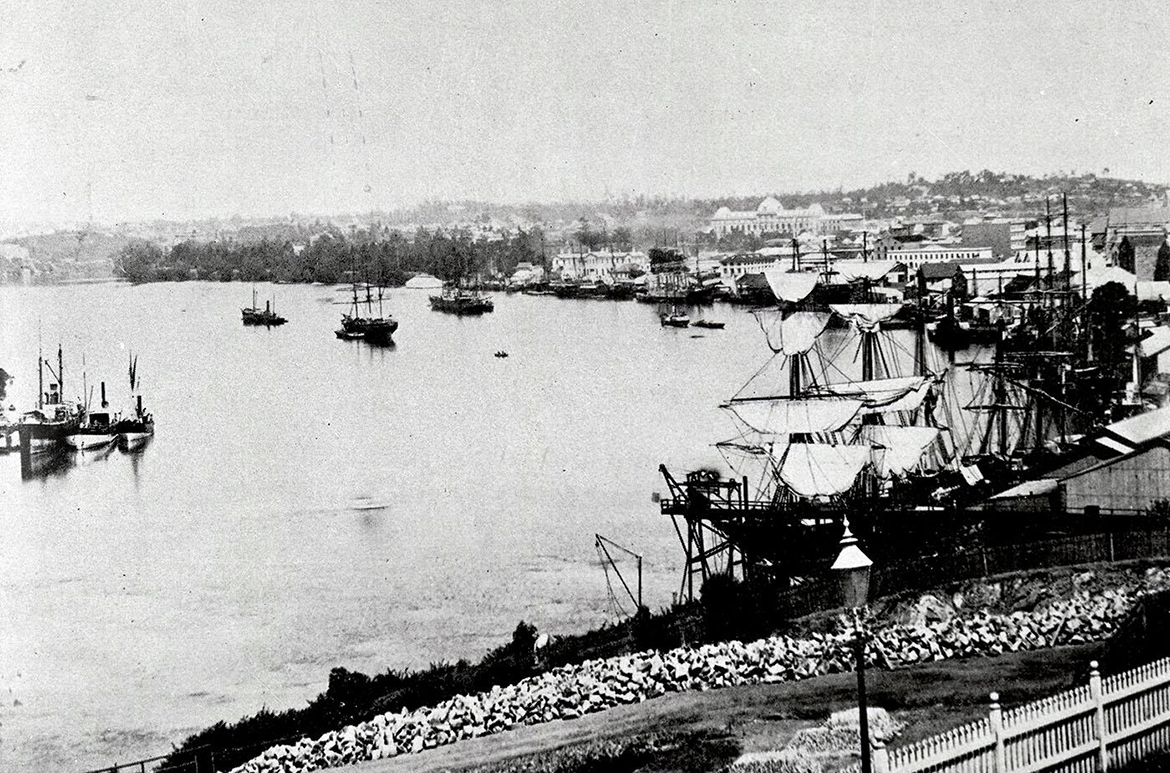
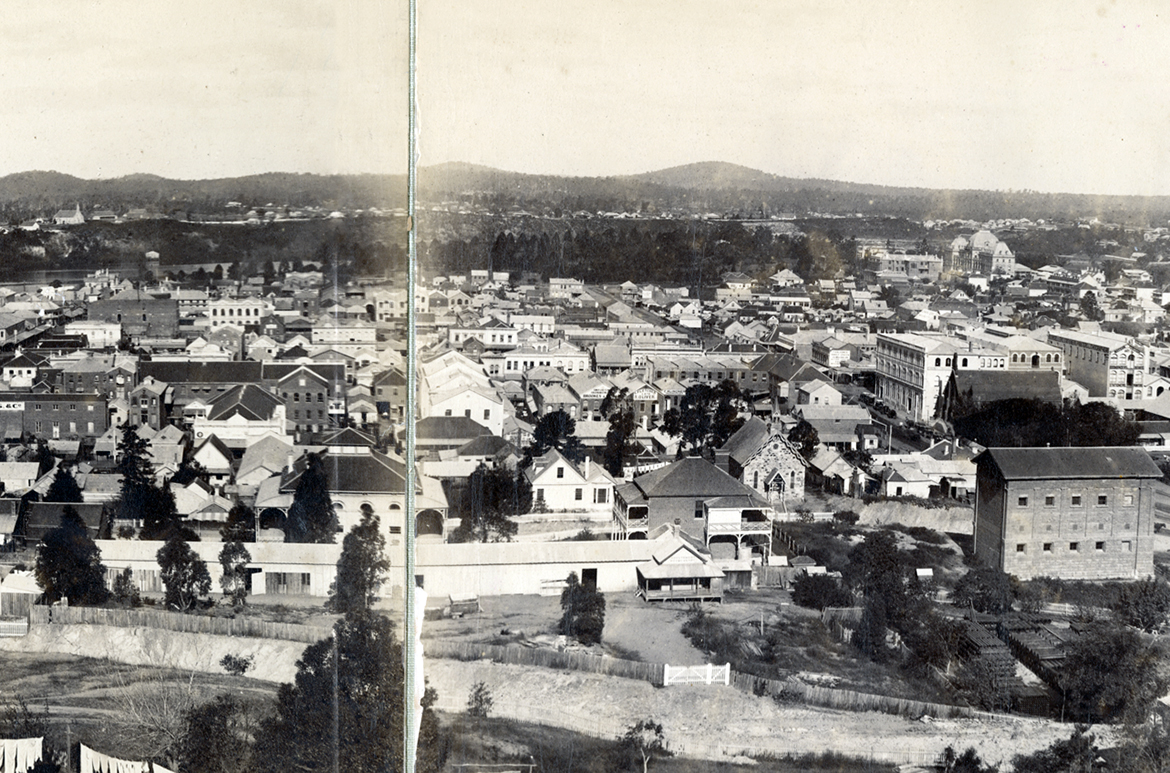

Parliament House (illustrated) located on a prominent point of the Brisbane River overlooks the city’s Botanic Gardens bounded on three sides by the curving river. The impressive architectural symbol was started in 1864, first occupied in 1868, and finally completed 25 years later. Designed by Charles Tiffin (1833–73), the English architect spent most of his career in Queensland contributing to significant architecture in Brisbane as Government Architect with the Public Works Department. Apart from designing Parliament House he also designed (Old) Government House (1860-62) (illustrated) which accompanies Parliament House at Gardens Point.
Parliament House c.1870

View to Government House from Parliament House c.1874-79
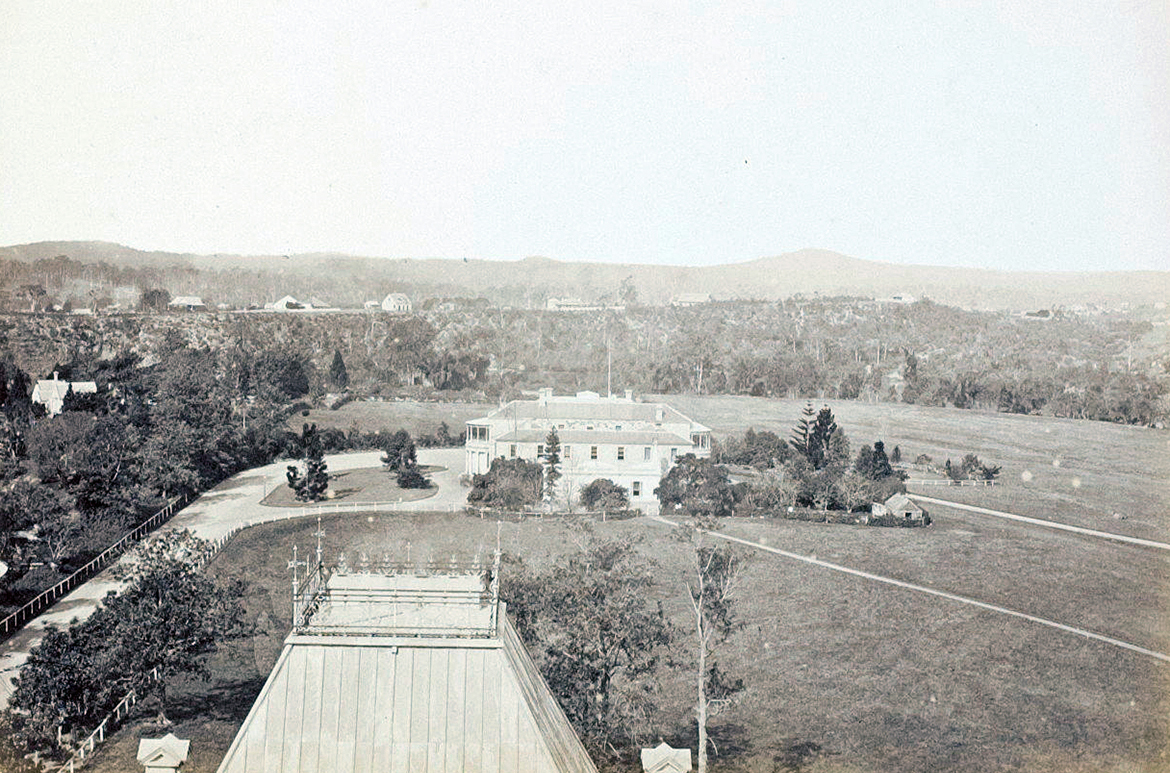
The three-storey Queensland Club (illustrated) on the corner of Alice and George Streets diagonally opposite Parliament House opened in 1884. Designed to provide a recreational venue and accommodation for the private Club established in 1859 when Queensland became a separate colony. Members were mainly politicians due to its proximity to the seat of government, pastoralists, and business owners.
Queensland Club 1912

Queensland Club tennis court in the Brisbane Botanic Gardens 1885
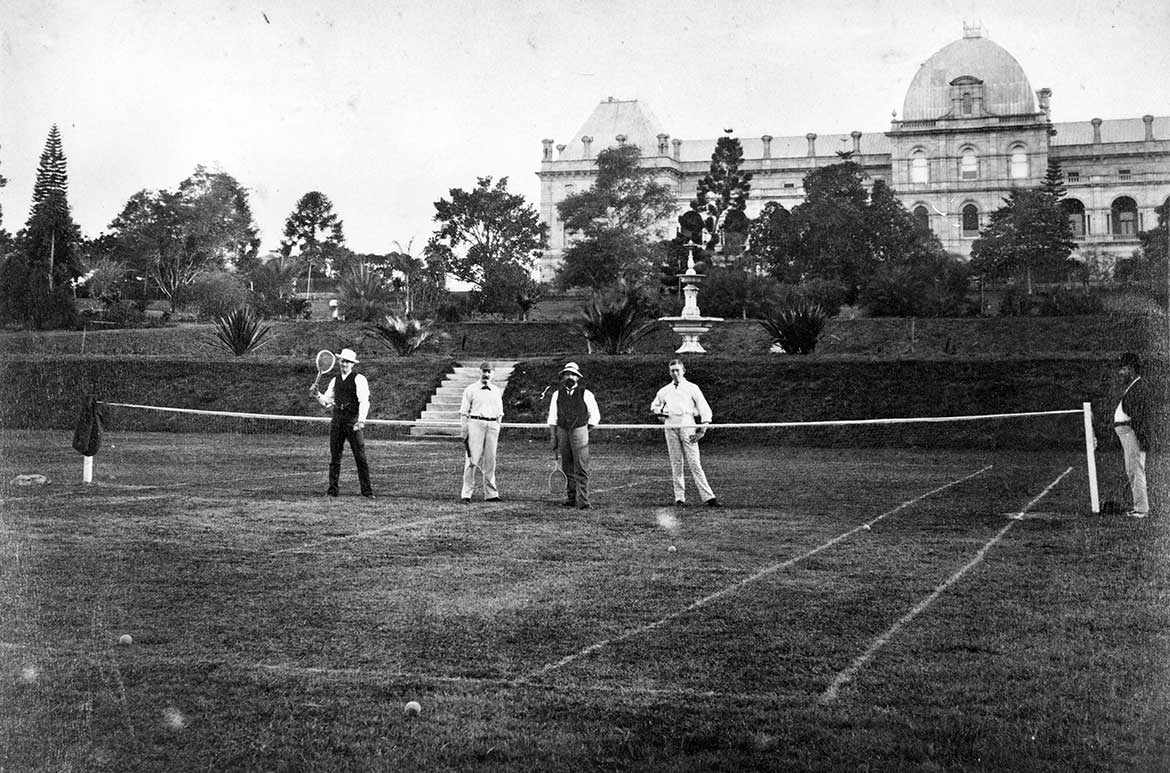
Contemporary depictions of Brisbane
Surviving early depictions of Brisbane such as Neville-Rolfe’s Houses of Parliament, Brisbane 1885 are rare. Of the works dating from the late 19th century that show the same reach of the river, the Panorama of Brisbane 1880 (illustrated) by J A (Joseph Augustine) Clarke (1840–90) — Queensland‘s first professional artist and art teacher — and Isaac Walter Jenner’s painting Brisbane from Bowen Terrace, New Farm 1888 (illustrated) record the busy life of the colony.
Harriet Jane Neville-Rolfe ‘Houses of Parliament, Brisbane’ 1885

Joseph Augustine Clarke ‘Panorama of Brisbane’ 1880

Isaac Walter Jenner ‘Brisbane from Bowen Terrace, New Farm’ 1888
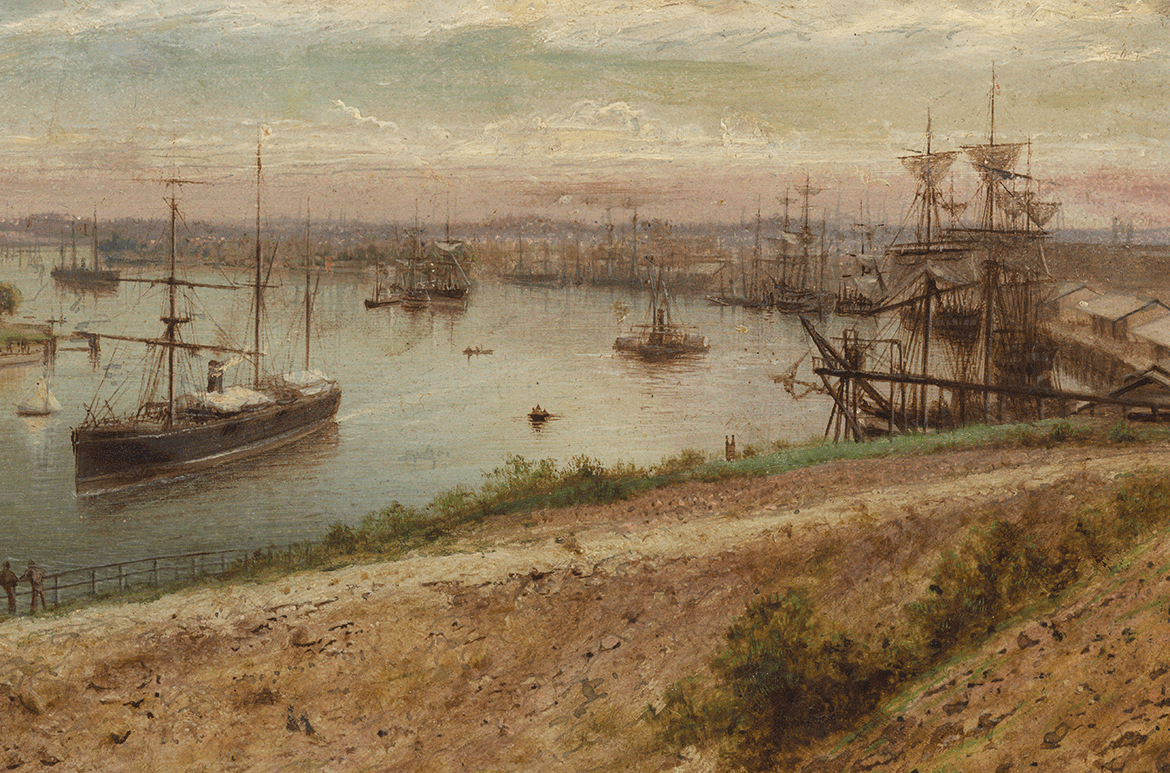
Landmarks recorded by Harriet Jane Neville-Rolfe
The importance of shipping to Brisbane’s commercial life is evident with the heritage buildings still standing at the intersection of Edward and Alice Streets — the reach portrayed by Neville-Rolfe — however most of these buildings we see today were constructed just after the artist departed Brisbane. Here, we delve into the activities that Neville-Rolfe would have witnessed and the buildings recognisable in Houses of Parliament, Brisbane.
Floating Municipal Swimming Baths
With few houses having access to running water, the building of public baths on the Brisbane River provided both safety and modesty. The Metropolitan Baths referenced here were originally moored at Petrie Bight, a sharp curve upstream at the northern end of the Town Reach. Before the construction of new city wharves, the baths were moved downstream to the end of Edward and Alice Streets, adjacent to the Botanic Gardens from 1875 until 1893. The baths can clearly be recognised in both Houses of Parliament, Brisbane and Panorama of Brisbane.
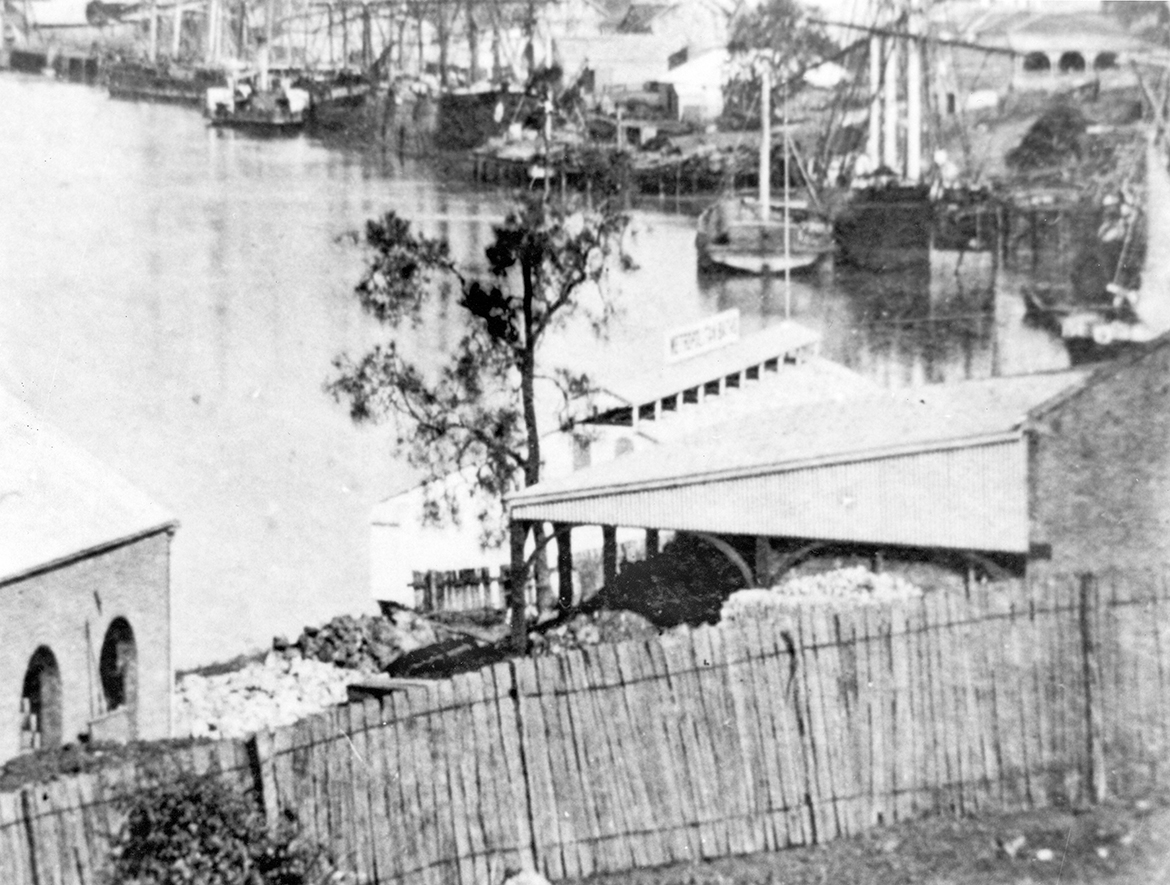

Edward Street Ferry Terminal
From 1860 the Edward Street Ferry adjacent to Brisbane’s Botanic Gardens and busy wharves ferried passengers from the city’s trading district to Kangaroo Point at Thornton Street. Originally serviced by row boats, by 1887 they were replaced by ferries. Another ferry operated from the Customs House upstream.
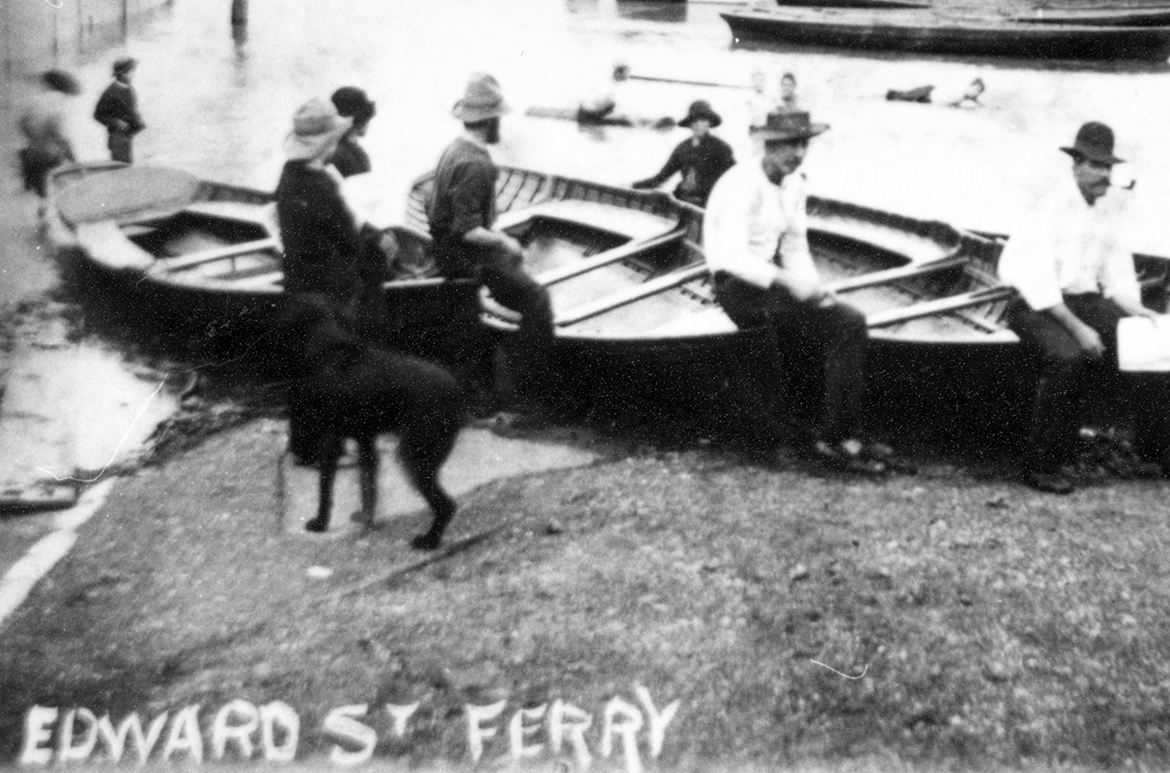
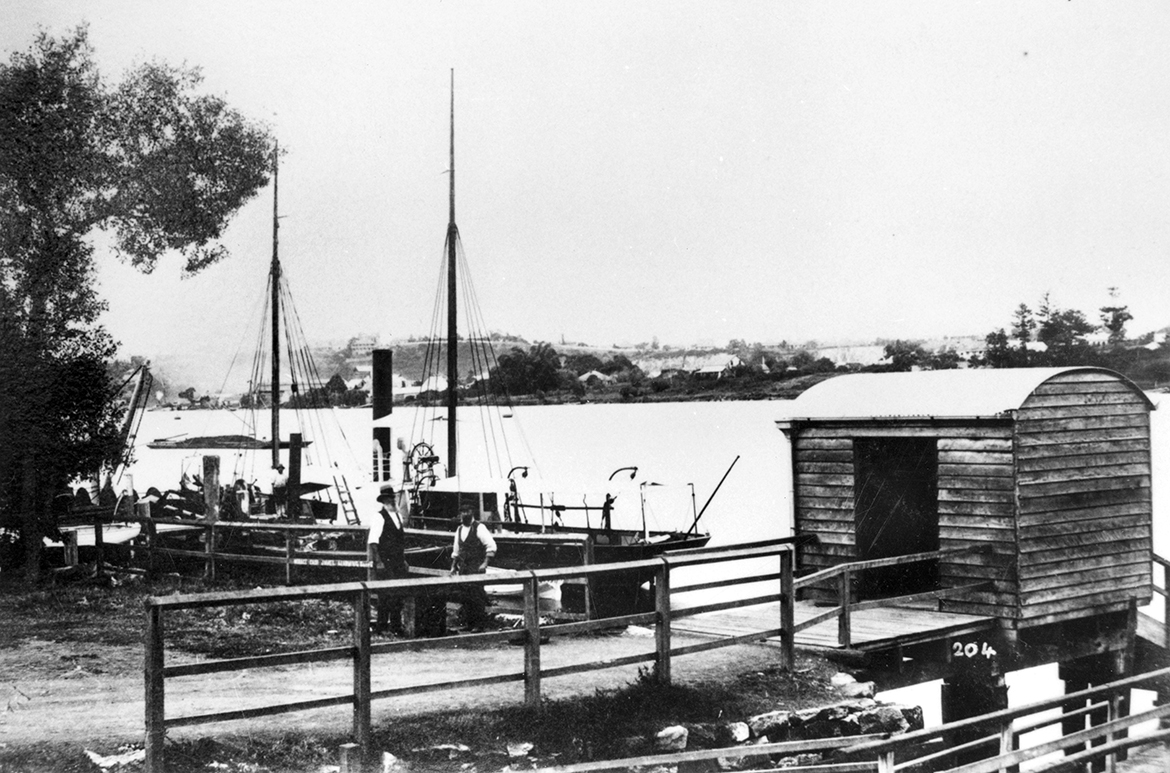
Harbours and Marine Building
Still standing today, the two-storey Harbours and Marine Building (1879-80) was erected on the riverbank near slipways, wharves and the Edward Street Ferry Terminal at the corner of Edward and Alice Street which has long been associated with the regulation of shipping. The building provided offices for the harbourmaster, pilots and staff of the Marine Board and Shipping Office and is commonly referred to today as the Port Office. The building can clearly be recognised in both Houses of Parliament, Brisbane and Panorama of Brisbane.
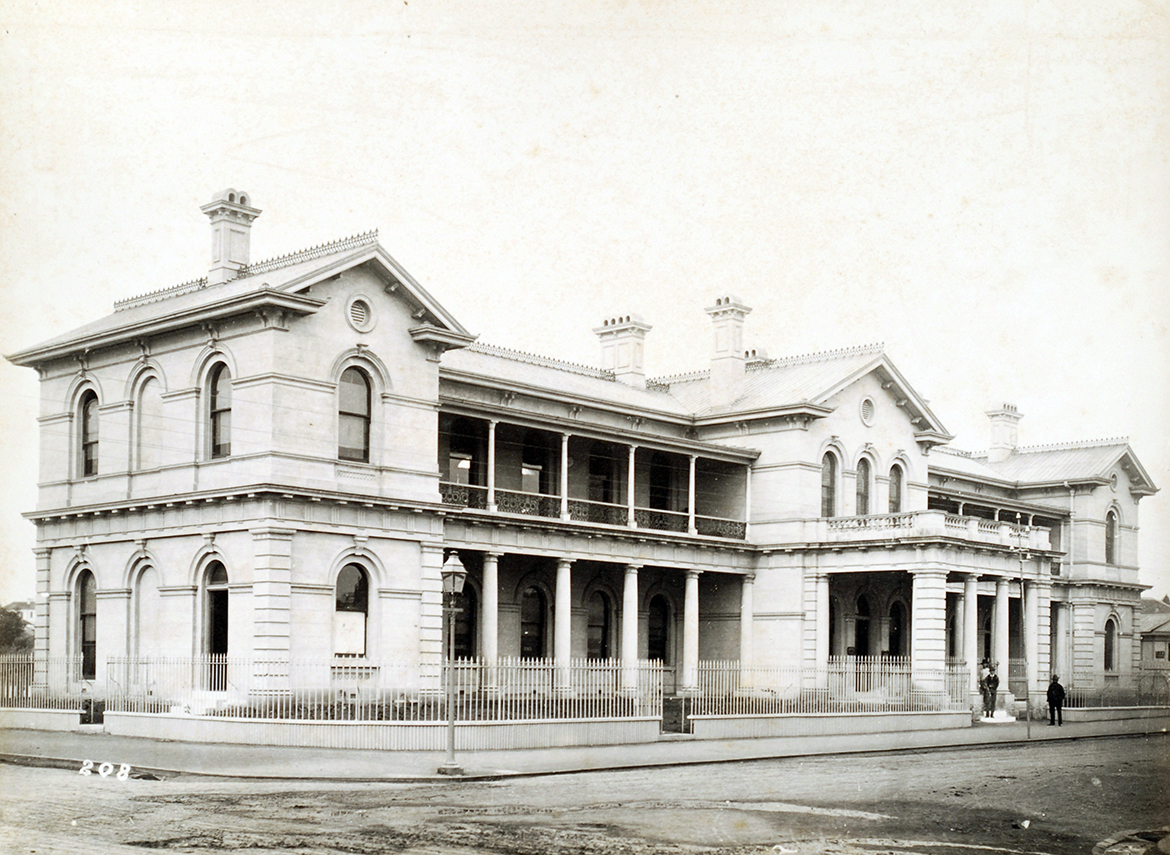
Shamrock Hotel
Situated opposite the Harbours and Marine Building on the corner of Edward and Margaret Streets, the originally named Shamrock Hotel opened in 1864. In 1876 the two-storey timber structure underwent substantial renovations and was rebuilt in masonry with wrap-around verandahs. The name was changed to the Port Office Hotel in 1909 with a new licensee, and references its proximity to the Port Office building.


Curatorial extracts, research and supplementary material compiled by Elliott Murray, Senior Digital Marketing Officer, QAGOMA
#QAGOMA

